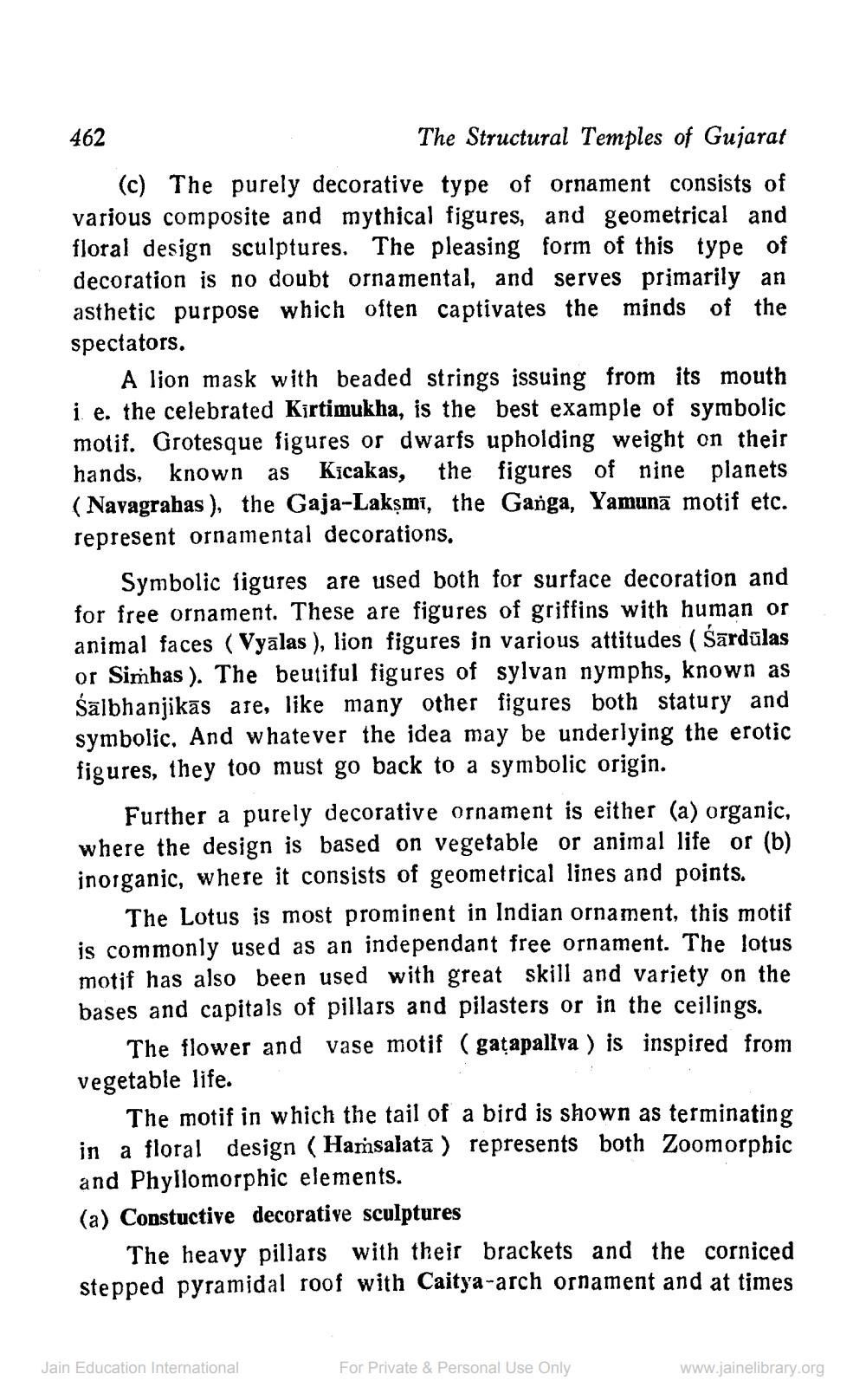________________
462
The Structural Temples of Gujarat (c) The purely decorative type of ornament consists of various composite and mythical figures, and geometrical and floral design sculptures. The pleasing form of this type of decoration is no doubt ornamental, and serves primarily an asthetic purpose which often captivates the minds of the spectators.
A ljon mask with beaded strings issuing from its mouth i e. the celebrated Kirtimukha, is the best example of symbolic motif. Grotesque figures or dwarfs upholding weight on their hands, known as Kicakas, the figures of nine planets (Navagrahas ), the Gaja-Lakşmi, the Ganga, Yamunā motif etc. represent ornamental decorations.
Symbolic figures are used both for surface decoration and for free ornament. These are figures of griffins with human or animal faces (Vyālas ), lion figures in various attitudes ( Śardūlas or Simhas ). The beutiful figures of sylvan nymphs, known as Śālbhanjikās are, like many other figures both statury and symbolic. And whatever the idea may be underlying the erotic figures, they too must go back to a symbolic origin.
Further a purely decorative ornament is either (a) organic, where the design is based on vegetable or animal life or (b) inorganic, where it consists of geometrical lines and points.
The Lotus is most prominent in Indian ornament, this motif is commonly used as an independant free ornament. The lotus motif has also been used with great skill and variety on the bases and capitals of pillars and pilasters or in the ceilings.
The flower and vase motif (gatapallva ) is inspired from vegetable life.
The motif in which the tail of a bird is shown as terminating in a floral design (Hansalatā) represents both Zoomorphic and Phyllomorphic elements. (a) Constuctive decorative sculptures
The heavy pillars with their brackets and the corniced stepped pyramidal roof with Caitya-arch ornament and at times
Jain Education International
For Private & Personal Use Only
www.jainelibrary.org




